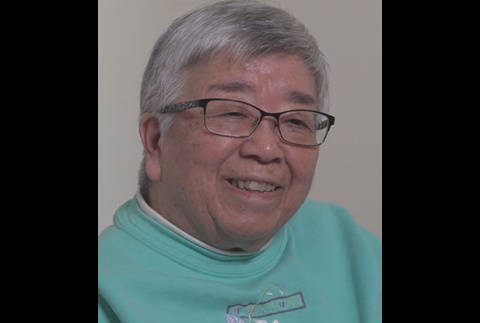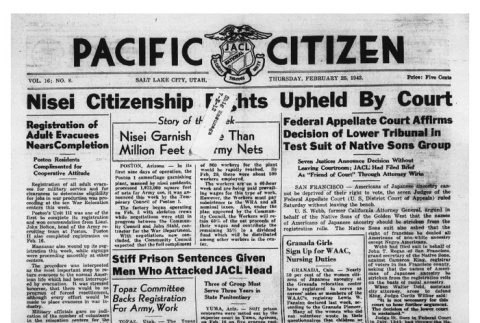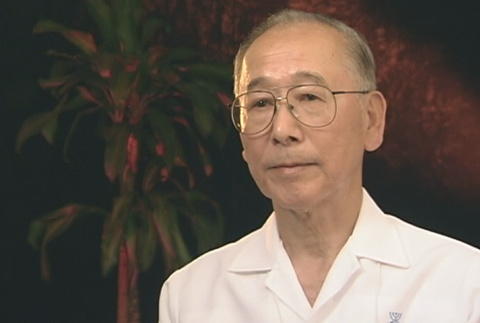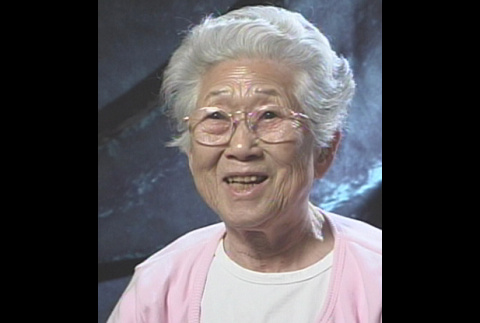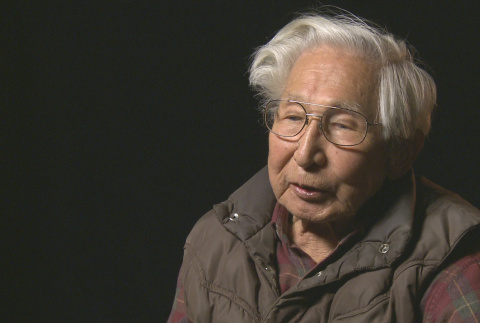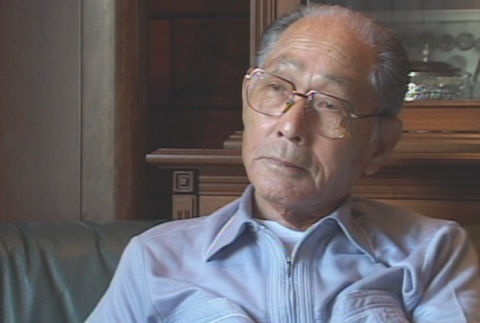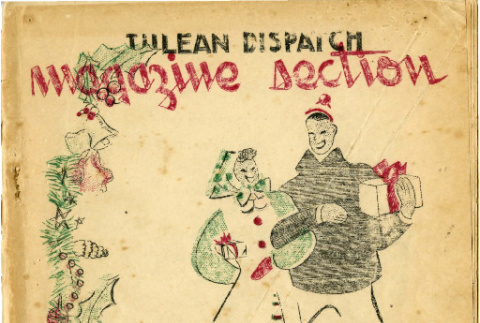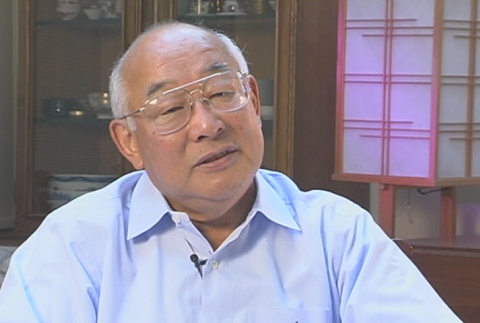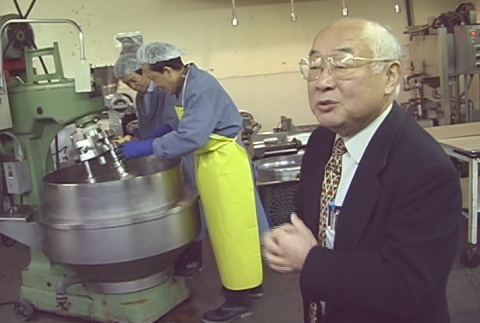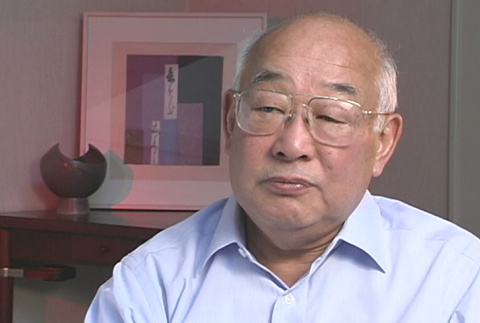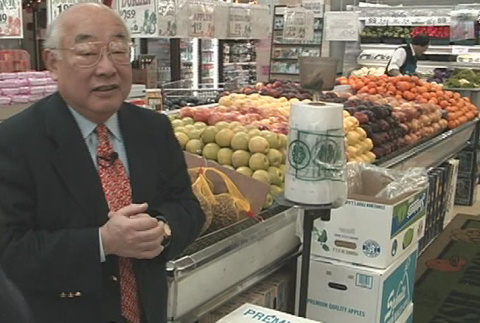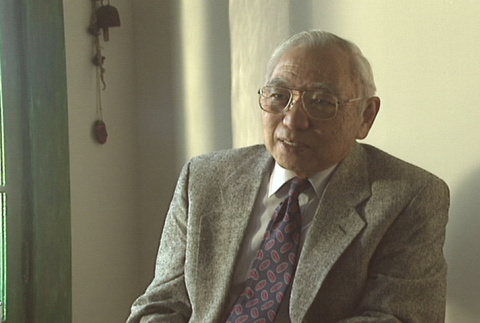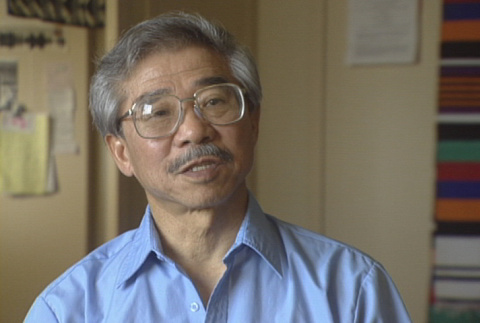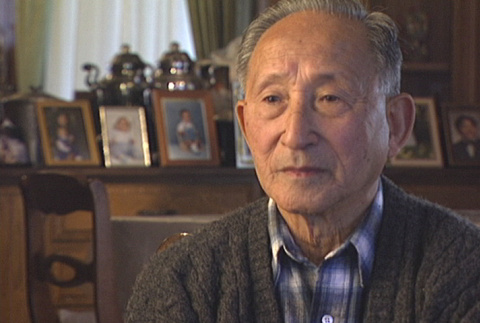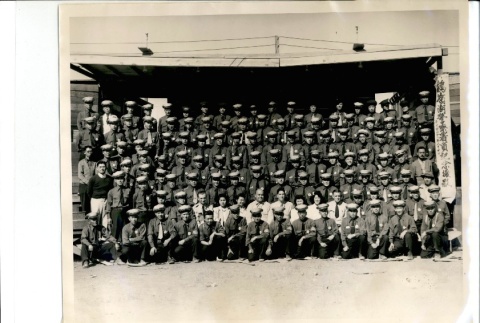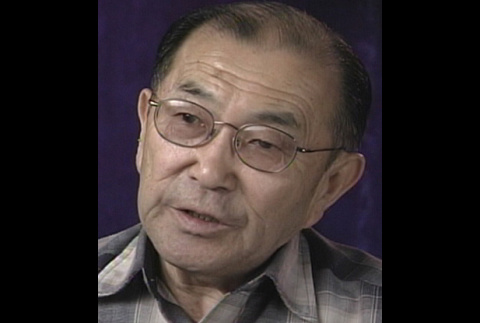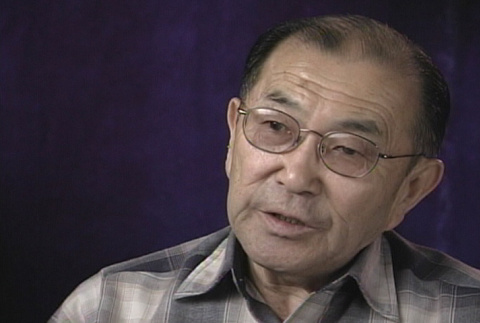975 items
975 items

Narrator Harry Ueno
Nisei male. Born April 14, 1907, in Pauilo, Hawaii. Lived in Japan from 1915 to 1923, and settled on the mainland upon his return to the United States. Was married in 1930, and was removed along with family to Manzanar concentration camp, California, during World War II. While in Manzanar, organized the Mess Hall Workers Union. …

Narrator Hannah Hirabayashi
Nisei-Sansei female. Born 1938 in Seattle, Washington. Grew up in the town of Christopher, now part of Auburn, Washington, where parents ran a grocery store. After the bombing of Pearl Harbor, father was arrested by the FBI and sent to the Fort Missoula internment camp, Montana. The rest of the family went to the Puyallup Assembly …
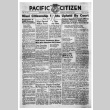
doc
The Pacific Citizen, Vol. 16 No. 8 (February 25, 1943) (ddr-pc-15-8)
Selected article titles: "Nisei Citizenship Rights Upheld By Court. Federal Appellate Court Affirms Decision of Lower Tribunal in Test Suit of Native Sons Group" (p. 1), "Registration of Adult Evacuees Nears Completion" (p. 1), 'Stiff Prison Sentences Given Men Who Attacked JACL Head" (p. 1), "Meatless Tuesdays, Fridays to Be Observed At Topaz Center" (p. 1), …

Narrator Betty Fumiye Ito
Nisei female. Born March 29, 1918, in Seattle, Washington, and spent childhood in Medina and Bellevue, Washington. While in high school was a member of the Bellevue Strawberry Festival's Queen's Court. In 1939 married Kenji Ito, a prominent Japanese American lawyer who practiced in Seattle. Following the bombing of Pearl Harbor, recounts her experiences as her …

vh
William Marutani Interview (ddr-densho-1000-44)
Nisei male. Born March 31, 1923, in Kent, Washington. During World War II, was incarcerated at the Pinedale Assembly Center, California, and Tule Lake concentration camp, California. After leaving camp to attend college in South Dakota, was drafted into the U.S. Army and served with the Military Intelligence Service during the postwar occupation of Japan. After …

Narrator Tomiye Terasaki
Kibei female. Born October 5, 1910, in San Francisco, California. At age three, sent to live with grandfather and receive education in Fukuoka, Japan. After high school, temporarily moved to Tokyo and assisted family-owned business. In 1929, returned to U.S. to join parents in Sacramento. After arranged marriage to Mr. Tadao Sakita, moved to Los Angeles, …
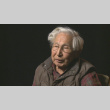
vh
Warren Koichi Suzuki Interview (ddr-densho-1000-410)
Nisei male. Born February 27, 1921, in Seattle, Washington. At age ten, was sent to Japan to live and attend school. Returned to Seattle prior to World War II. During the war, was removed to the Puyallup Assembly Center, Washington, and the Minidoka concentration camp, Idaho. Answered "no-no" on the so-called "loyalty questionnaire" and was transferred …
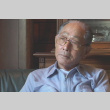
vh
Tokio Yamane Interview (ddr-densho-1000-432)
Kibei male. Born September 2, 1922, in Hawaii. Moved with family to Hiroshima at age three, then returned to the Fresno area of the U.S. for high school. During World War II, was sent to the Fresno Assembly Center, California, and the Jerome concentration camp, Arkansas. While at Jerome, refused to answer the so-called "loyalty questions" …
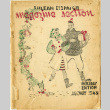
doc
Tulean dispatch magazine section: holiday edition (ddr-csujad-26-46)
Monthly publication at Tule Lake incarceration camp including stories, poems, commentary and creative writing. Current issue includes: "An editorial" by Howard M. Imazeki; "Her name is woman" by Riley O'Suga; "Christmas tree" by Shuji Kimura; "Six old bachelors" by Miyoko Takagi; "Looking back" by Eugene Okada; "Great American tragedy" by Tsuyoshi Nakamura; "Pure hell" by Yukio …

vh
Tomio Moriguchi Interview I (ddr-densho-1000-59)
Ni-ten-gosei (Nisei/Sansei) male. Born April 16, 1936, in Tacoma, Washington. During World War II, was incarcerated with his family at the Tule Lake concentration camp, California. After the war, resettled in Seattle's Nihonmachi, where his father reestablished the family business, Uwajimaya, selling Japanese foodstuff and other items. Worked at Uwajimaya throughout his childhood -- along with …
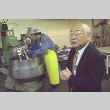
vh
Tomio Moriguchi Interview III (ddr-densho-1000-61)
Ni-ten-gosei (Nisei/Sansei) male. Born April 16, 1936, in Tacoma, Washington. During World War II, was incarcerated with his family at the Tule Lake concentration camp, California. After the war, resettled in Seattle's Nihonmachi, where his father reestablished the family business, Uwajimaya, selling Japanese foodstuff and other items. Worked at Uwajimaya throughout his childhood -- along with …

vh
Tomio Moriguchi Interview II (ddr-densho-1000-60)
Ni-ten-gosei (Nisei/Sansei) male. Born April 16, 1936, in Tacoma, Washington. During World War II, was incarcerated with his family at the Tule Lake concentration camp, California. After the war, resettled in Seattle's Nihonmachi, where his father reestablished the family business, Uwajimaya, selling Japanese foodstuff and other items. Worked at Uwajimaya throughout his childhood -- along with …
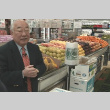
vh
Tomio Moriguchi Interview IV (ddr-densho-1000-62)
Ni-ten-gosei (Nisei/Sansei) male. Born April 16, 1936, in Tacoma, Washington. During World War II, was incarcerated with his family at the Tule Lake concentration camp, California. After the war, resettled in Seattle's Nihonmachi, where his father reestablished the family business, Uwajimaya, selling Japanese foodstuff and other items. Worked at Uwajimaya throughout his childhood -- along with …
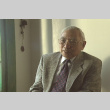
vh
Frank Miyamoto Interview (ddr-densho-1002-1)
Nisei male. Born July 29, 1912, in Seattle, Washington. Wrote 'Social Solidarity Among the Japanese in Seattle' as a Master's thesis, published in 1939 as one of the first academic works on the Japanese immigrant community. Incarcerated in Tule Lake concentration camp, California. Member of the Evacuation and Resettlement Study which studied the incarceration and resettlement …
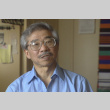
vh
Jim Hirabayashi Interview (ddr-densho-1002-5)
Nisei male. Born October 30, 1926, in small town of Thomas, Washington, on family farm. Attended school in Auburn, Washington, before being removed to the Pinedale Assembly Center and Tule Lake concentration camp, California. Left camp to work in Idaho, and was subsequently joined by family. Postwar, became a social anthropologist, and later became only the …
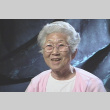
vh
Tomiye Terasaki Interview (ddr-densho-1000-122)
Kibei female. Born October 5, 1910, in San Francisco, California. At age three, sent to live with grandfather and receive education in Fukuoka, Japan. After high school, temporarily moved to Tokyo and assisted family-owned business. In 1929, returned to U.S. to join parents in Sacramento. After arranged marriage to Mr. Tadao Sakita, moved to Los Angeles, …
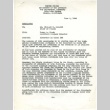
doc
Memo from Harry L. Black, Assistant Project Director, to Willard E. Schmidt, Chief of Police, re: disorders in Block #54, June 2, 1944 (ddr-csujad-2-83)
Discusses imprisonment in the stockade of 12 incarcerees and tension concerning the Japanese Language Schools and the schools in the camps, detailing what it terms "terrorist tactics" on the part of the Japanese Language School's proponents and concluding that the Project Director is justified in using the stockade for disciplinary purposes. The document also includes the …
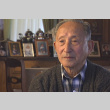
vh
Harry Ueno Interview (ddr-densho-1002-7)
Nisei male. Born April 14, 1907, in Pauilo, Hawaii. Lived in Japan from 1915 to 1923, and settled on the mainland upon his return to the United States. Was married in 1930, and was removed along with family to Manzanar concentration camp, California, during World War II. While in Manzanar, organized the Mess Hall Workers Union. …
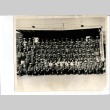
img
Tule Lake Camp group photograph (ddr-csujad-2-67)
Appears to be group photograph of internal security officers at Tule Lake Camp. Photograph includes Willard Schmidt, Chief of Internal Security at Tule Lake Camp. Includes list of members in photograph. Names from left to right: Seventh Row: Okino, Y., Kato, J., Taniguchi, S., Yoshihara, D., Asada, E., Yamakawa, M., Yoshihara, G., Iwawaki, H., Yokoyama, K., …

Narrator Tomio Moriguchi
Ni-ten-gosei (Nisei/Sansei) male. Born April 16, 1936, in Tacoma, Washington. During World War II, was incarcerated with his family at the Tule Lake concentration camp, California. After the war, resettled in Seattle's Nihonmachi, where his father reestablished the family business, Uwajimaya, selling Japanese foodstuff and other items. Worked at Uwajimaya throughout his childhood -- along with …

Narrator John Kanda
Nisei male. Born July 10, 1925, in Seattle, Washington. Grew up in the Thomas-Auburn area of Washington. Following Executive Order 9066, family was removed to the Pinedale Assembly Center, then to Tule Lake concentration camp in California. Later transferred to Minidoka concentration camp, Idaho. Volunteered as a replacement for the 100th/442nd Regimental Combat Team and trained …
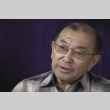
vh
John Kanda Interview (ddr-densho-1000-116)
Nisei male. Born July 10, 1925, in Seattle, Washington. Grew up in the Thomas-Auburn area of Washington. Following Executive Order 9066, family was removed to the Pinedale Assembly Center, then to Tule Lake concentration camp in California. Later transferred to Minidoka concentration camp, Idaho. Volunteered as a replacement for the 100th/442nd Regimental Combat Team and trained …

doc
Envelope and letter to Dr. Dr. Keizaburo "Kei" Koyama from Teru Koyama (ddr-one-5-71)
Envelope addressed to Dr. Keizaburo Koyama at Santa Fe Detention Station from his wife, Teru Koyama, at Minidoka. Postmarked Sep 13, 1943. In place of postage, “Internee of War/Free Mail” is written in the upper right corner. Along the top “9/20-43” is written in red pencil. Inside the envelope is a letter dated Sept 12, 1943. …

Narrator Matsuko Hayashi
Born in 1921 in Parlier in Fresno County, California, Matsuko Hayashi (pseudonym) grew up as the second oldest of the eight children of a first-generation immigrant who had come to the United States as a sixteen years old, and his wife who had come as a "picture bride." They raised grapes on three farms that Matsuko's …
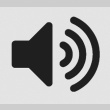
vh
Matsuko Hayashi Interview (ddr-densho-1021-4)
Born in 1921 in Parlier in Fresno County, California, Matsuko Hayashi (pseudonym) grew up as the second oldest of the eight children of a first-generation immigrant who had come to the United States as a sixteen years old, and his wife who had come as a "picture bride." They raised grapes on three farms that Matsuko's …

